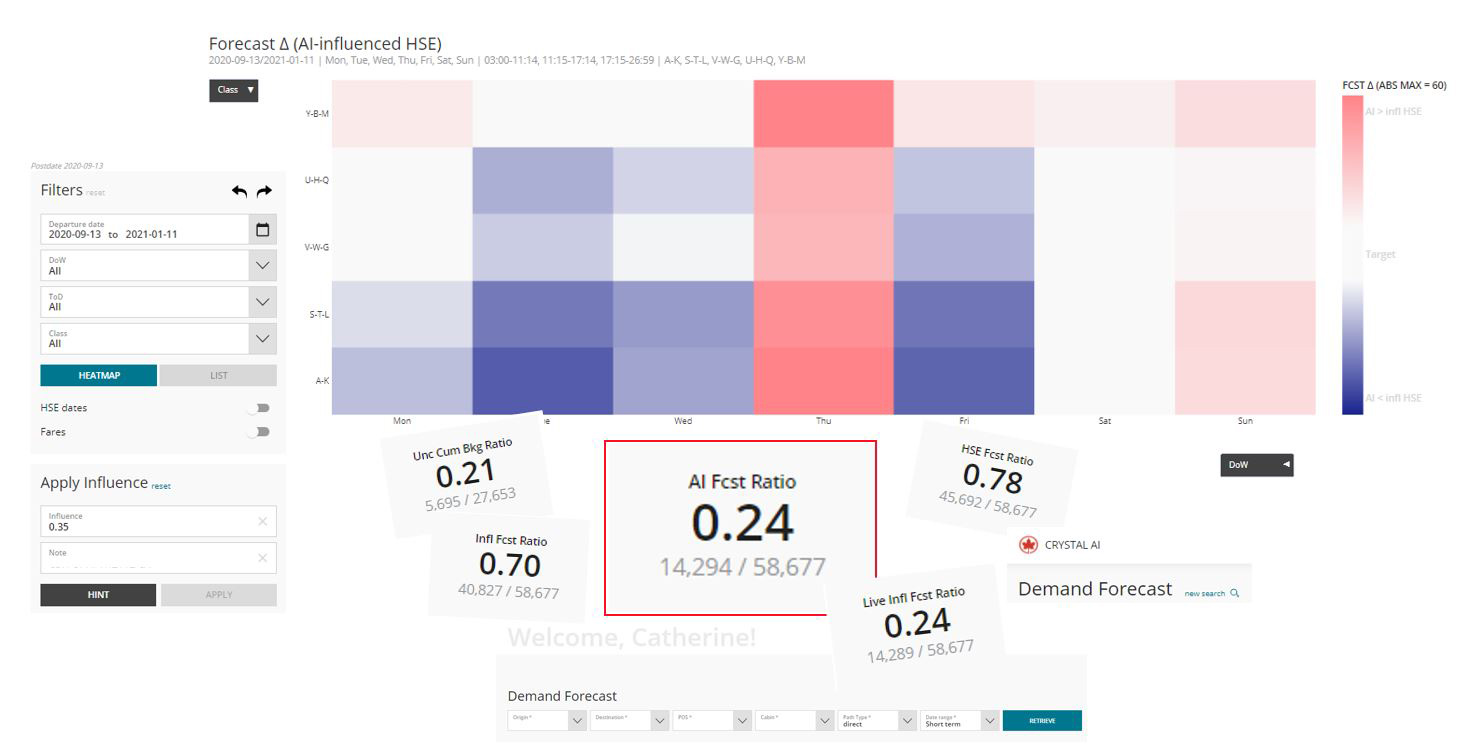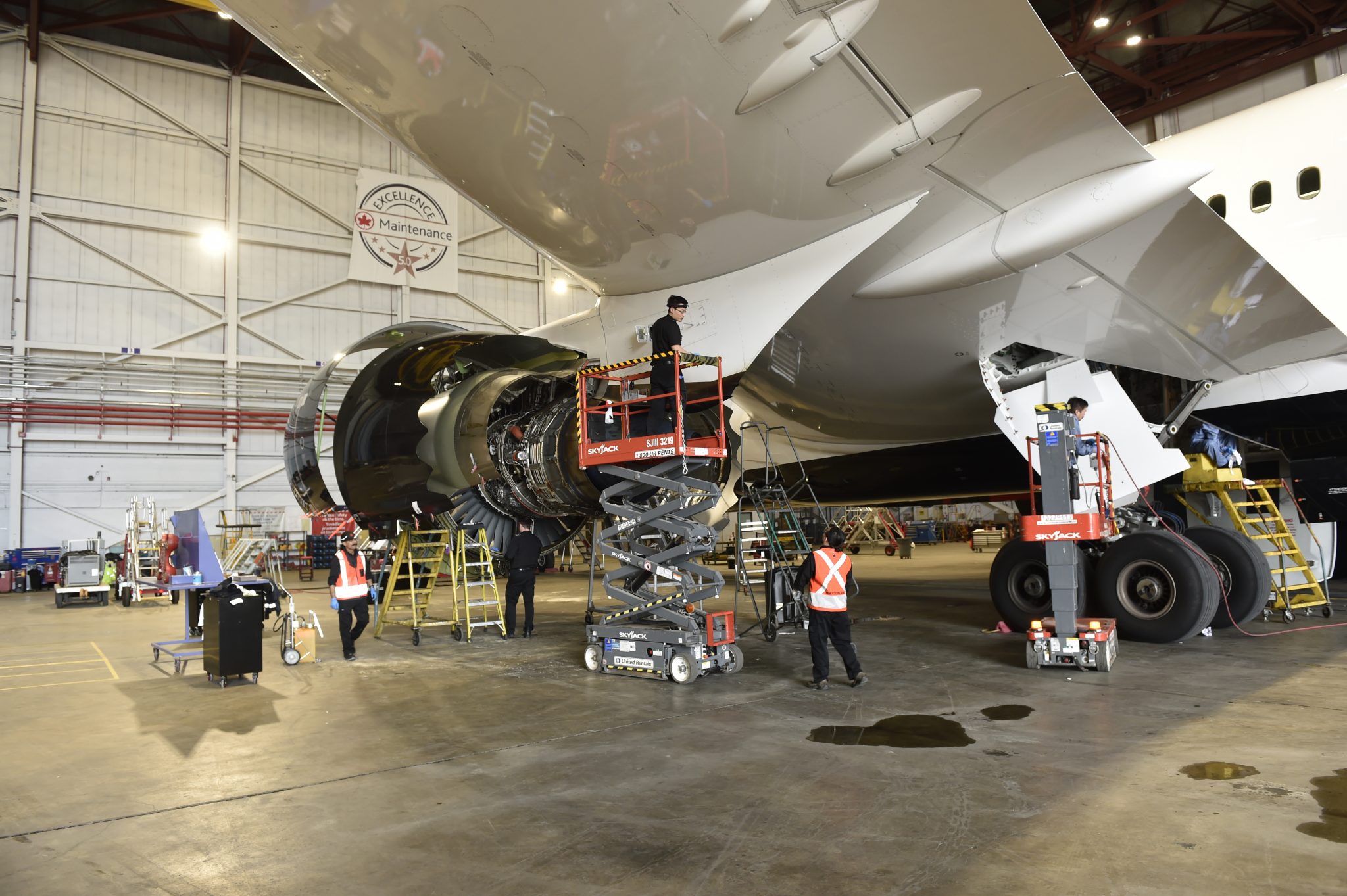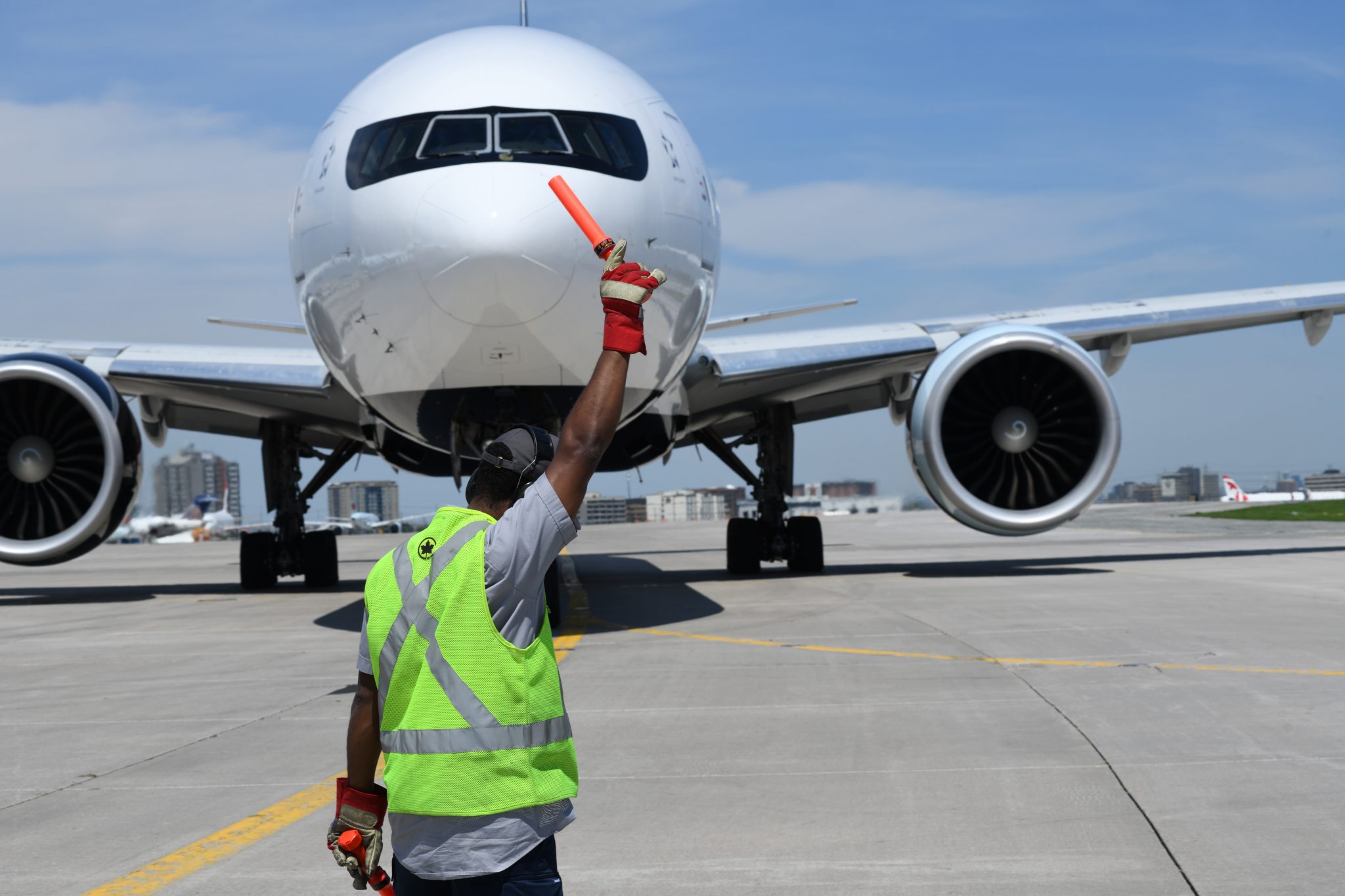Air Canada has made it clear that the development and implementation of artificial intelligence (AI) will play a key part of the airline’s future, and it has already established several initiatives within various branches that will have long-term benefits.

In the current climate brought on by the COVID-19 pandemic, the use of AI has taken on an added level of importance. The travel industry has been disproportionately affected by the pandemic and AI will not only play a vital role in Air Canada’s recovery, but also that of the entire industry. “During this crisis, the use of AI has become even more imperative to support Air Canada’s recovery efforts because all the data that has long been used for modelling really doesn’t make sense anymore. This is especially true in Revenue Management, the branch that forecasts sales, but also at Air Canada Cargo, which has used the AI infrastructure to pivot quickly in the face of the crisis by reconfiguring aircraft for all-cargo operations and other undertakings that have become a key part of the recovery,” said Catherine Luelo, Senior Vice President and Chief Information Officer.

Work to develop and implement AI solutions at Air Canada began in 2018 and has gained momentum as the programs have evolved. The push to innovate and come up with new ways to deploy AI is a continual process, so to allow better coordination of the various initiatives, Air Canada has established a Centre of Expertise with key stakeholders from the programs.
Air Canada has partnered with various other AI organizations throughout Quebec to develop the technology and is a key part of the Scale AI consortium, which helps grow AI projects across a wide spectrum of organizations and is a pillar of Canada’s AI ecosystem.
Just a Quick Note:
InnovationsOfTheWorld.com has partnered with Trade License Zone (TLZ) to support global innovators looking to expand internationally. Take advantage of the UAE’s Free Zones—enjoy streamlined setup, low corporate taxes, and a strategic gateway to the Middle East and beyond.
Get Your UAE Free Zone License Fast & Easy!Each AI initiative at Air Canada goes through three stages: The Lab phase, where the initial research and development is conducted; The Proof of Value Phase, which validates that the proposed solution delivers the desired results; and the Factory Phase, which rolls out the solution to the Air Canada network.
“AI will play a major role in the future success of Air Canada and we are already well on our way with AI labs at Air Canada Cargo and Revenue Management. But we continue to invest and develop new ways in which AI will help Air Canada evolve and grow,” said Luelo. “The true value of AI is when we bring it to life to change the way we work as an airline. Initiatives like this demonstrate the incredible potential for AI and make what is often thought of as an abstract concept more relatable.”
AI is not a program or project, but rather a capability embedded in our operations to support the organization in making better informed decisions. This capability involves building the necessary components such as talent development, investments in technology and processes to support a data-driven decision-making culture.
Revenue Management – Refining forecast models
Revenue Management at Air Canada has always relied on data and analytics, but AI is changing the way all that information is ingested and interpreted in order to refine the forecasting models that allow the airline to manage its aircraft and expansive network of routes.
There are two main areas of focus for AI in Revenue Management, centred on the ability to generate better forecasting models by either creating new ones or complementing those already in use. While much of the focus for the AI team is on those core projects, there are also several other smaller projects being worked on simultaneously.
The most advanced AI project in Revenue Management is geared toward supplementing the existing models for demand forecasting. Passenger demand is the main input to the optimization system that allows the airline to determine how many seats to make available in each market it serves, and at what price. Through the use of deep learning and machine learning, AI will help better predict the volume of passenger demand.
Developed in partnership with Ivado Labs, this technology is now in the factory phase for AI and is already in use for Revenue Management. Development work began in early 2019 and by August 2020, AI was in use on 60 Air Canada routes. By January 2021, it will be implemented on 200 routes.
“The new technologies associated with AI allow our Revenue Management teams to ingest more data sources that can better explain customer behaviour, which will lead to more accurate, reactive forecasts. AI models have also been developed to measure the benefits associated with the new tools, so that is quite exciting and extremely innovative,” said Richard Cleaz-Savoyen, Director, Revenue Optimization at Air Canada.

The AI technology for Revenue Management also incorporates a web-based tool that allows demand managers to interact with the AI forecast and view the recommendations in order to make any changes to the current demand. The tool also includes optimization models that are used to determine the top changes that should be made for a given market to move the current demand toward the AI forecast as much as possible.
“Managing our demand forecasts is a very resource-intensive job, so the AI models will provide the demand managers with the appropriate recommendations based on recent market changes. This will result in improved forecasting accuracy and automation of clerical tasks, and ultimately support Air Canada to price its seats more optimally and competitively in the market. The new technology is very reactive, creates a more user-friendly experience, and allows the team to focus on added-value activities and make best use of their expertise,” said CleazSavoyen.
Work is also well underway on developing an entirely new model to predict how many customers might not show up for their flight. With a more accurate no-show model, Air Canada will be able to ensure that more people can fly on the day they wish to travel by better predicting how many seats will be open and making them available for sale.
In the current unprecedented context, where last year’s demand patterns have become irrelevant to predict the future, the AI forecasting models have demonstrated good results, which is exciting and aligning with Air Canada’s expectations of building models that are more responsive to the latest trends.
“On top of the larger modules, the AI team has been agile in responding to the unprecedented crisis in the industry because of the COVID-19 pandemic, mobilizing to help in many aspects of the airline’s recovery,” said Cleaz-Savoyen.

AI at Cargo – More accurate predictions help maximize capacity
Air Canada Cargo was one of the earliest adopters of AI within the airline, and the first of several projects that have been developed within the branch went live in November 2019 – only a few short months after development began in March 2019.
The first AI application for Cargo was developed to help better predict the available cargo space and volume for all flights within the next 30 days. With many variables to consider – passenger load, seasonality and others – a more precise prediction in terms of cargo capacity available will result in better service to the customer.
It’s very exciting to see how AI can benefit both our customers and employees. The predictive algorithms that we’ve been working on help give our people access to richer and more reliable information, which will help them make strategic decisions and allow for more effective bookings,” said Jean-François Pagé, Director, Cargo Artificial Intelligence.
Air Canada Cargo partnered with McKinsey in the development of this AI infrastructure, with the added benefit of also allowing for a better prediction of the no-show factor for cargo.
“This is quite important for Cargo to know. These models allow our teams to refine their planning to ensure that each aircraft takes off with the maximum amount of goods on board by potentially finding additional customers to utilize space that would otherwise be left empty. This is not only beneficial for Air Canada Cargo, but also to customers who might otherwise not have been able to secure space for their products,” Jean-François Pagé said.
“These tools have already resulted in a significant improvement in the overall load factor at Air Canada Cargo when compared to the previous system that was being used,” Pagé added.
A second project went live late in 2020 which relates to the rates Air Canada Cargo charges its customers, whether that is through existing contracts or spot rates (for last-minute or one-off shipments).

And even after these projects have been fully implemented, the work to further refine them never stops. There is a continuous feedback loop between the users of the AI application and the AI development team. This will ensure improved usability of the tool over time and will help maximize the benefits for customers, as well as the front-line employees at Air Canada Cargo.
“These projects are really laying the framework for other ones that are to come at Air Canada Cargo as we believe we are futureproofing ourselves in this quickly evolving field. And everything we are putting in place will ultimately help augment the experience of the end-user, our front-line employee, by giving them tools to help enhance their day-to-day life, and make their jobs more interesting,” Pagé said.
The AI teams at Air Canada Cargo are also working on developing a system that will help improve customer service by refining the acceptance process for freight when it arrives at the warehouse. Shipments sometimes arrive without all the required and valid details and documents, which can cause problems with getting the shipment loaded onto the aircraft on time.
That is currently in the proof of concept phase and is planned to be rolled out in mid-2021. Other projects being planned include a tool to help warehouse employees build pallets and pack Unit Load Devices – the shipping containers used to load cargo into the bellies of aircraft – more efficiently. The teams at Air Canada Cargo are also looking at ways to take advantage of the growing demand for e-commerce shipments.
When the COVID-19 pandemic took a toll on the entire aviation sector, including air freight, Air Canada Cargo quickly adapted to this unprecedented crisis with the reconfiguration of seven aircraft to cargo-only operations.
While that was not done through AI, AI will be instrumental during the recovery phase by allowing the Cargo teams to build new models based on the huge amount of data available so they are able to react faster to the airline industry’s new reality.
“Our systems were not built to operate with much of our route network cancelled, so AI will be an important tool as we move forward and ingest new data that will help shape the models of the future,” Pagé said.

AI at Air Canada – What is to come
While the projects in Revenue Management and Cargo are well on their way, there remains tremendous opportunity for Air Canada to benefit from AI.
A major focus of the next round of the AI programs already under development will be in Operations and Maintenance, with no fewer than five key areas already identified as critical opportunities that will return the greatest value. And within each area of focus, there are multiple initiatives under consideration.
“While still at a relatively early stage, we are leveraging the learnings of our Revenue Management and Cargo colleagues. There are big opportunities for us to drive down costs through the efficiencies possible thanks to AI in Maintenance, but also in-flight punctuality, which is all about taking care of our customers,” said Sandra Harris, Senior Director, Operations Excellence at Air Canada.
In maintenance, a major goal of AI will be to optimize Air Canada’s resources and ultimately improve aircraft reliability by reducing the amount of time aircraft are out of service.
The operations side will benefit by allowing for a better on-time performance and reduced baggage mishandling, which will in turn result in an improved customer experience.
“Within the Maintenance world, we are very data heavy. We feel that the work we will be doing with AI and with advanced analytics is really going to move us forward in terms of moving the industry forward in the Maintenance, Repair and Overhaul (MRO) environment. From the Operations perspective, we are looking at this as an ideal approach to link our customer and operational data to maximize its usefulness,” said Keith Dugas, Manager, Connected Operations.
As seen in Revenue Management and Cargo, AI is being used to build better prediction models and that will also be true of future initiatives for Maintenance and Operations
Notably, one use for AI under development within the Operations branch will be to better predict possible delays and propose the most effective recovery model to minimize any disruptions within the network.

Similarly, Maintenance is working toward a predictive maintenance model that compiles and analyzes millions of pieces of data received from Air Canada’s fleet of aircraft to identify potential issues before they arise. With safety as Air Canada’s top priority, this will allow for better planning of required maintenance work and staying ahead of potential issues that could affect the airworthiness of the aircraft. It will also help reduce downtime and potential delays across the network.
The first AI lab from these groups will take place within the Maintenance division and be based at Air Canada’s Montreal headquarters.
“These initiatives present a huge opportunity for Air Canada, from allowing our employees to take all that information to drive value for our organization to serving our customers better, which I think is really what it’s all about,” Harris said.














